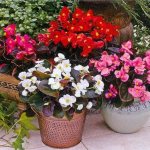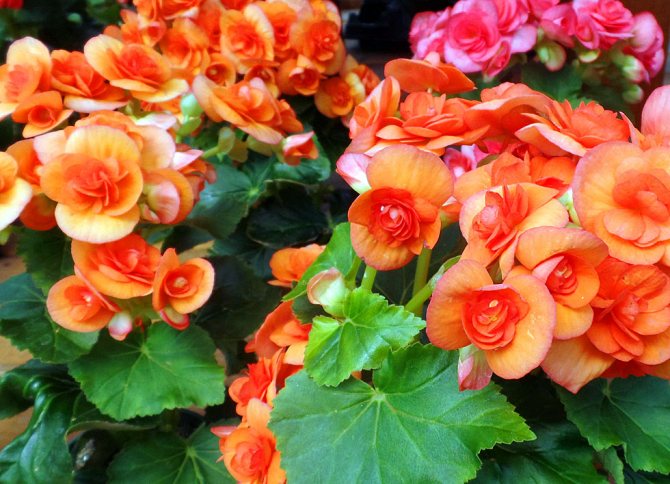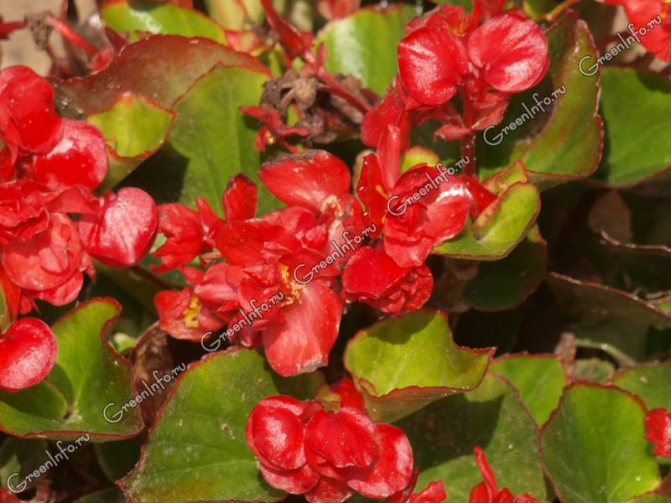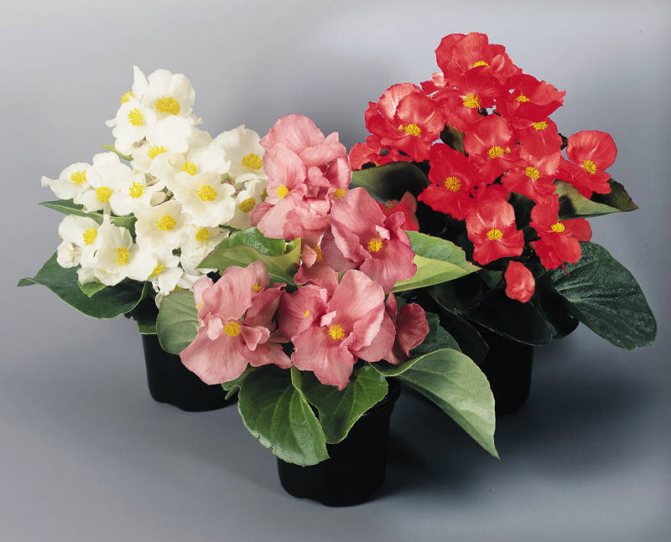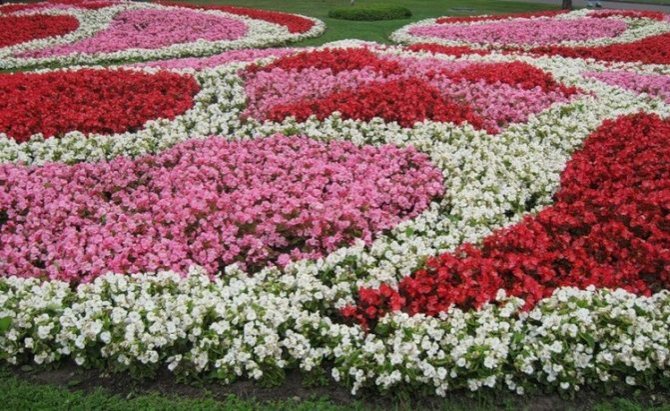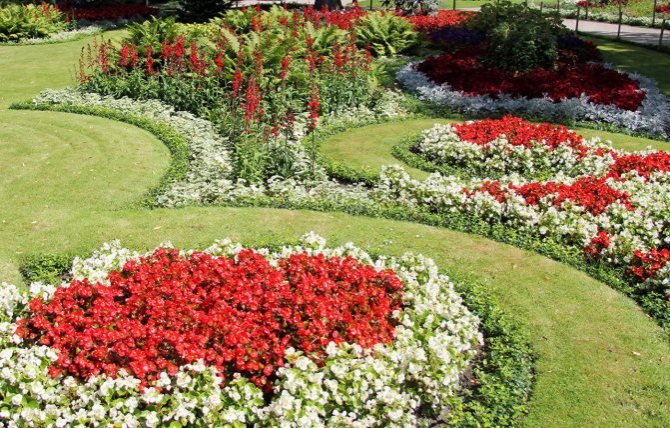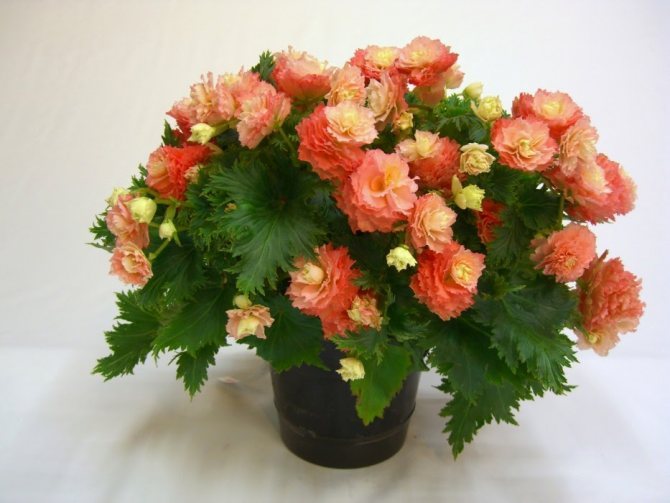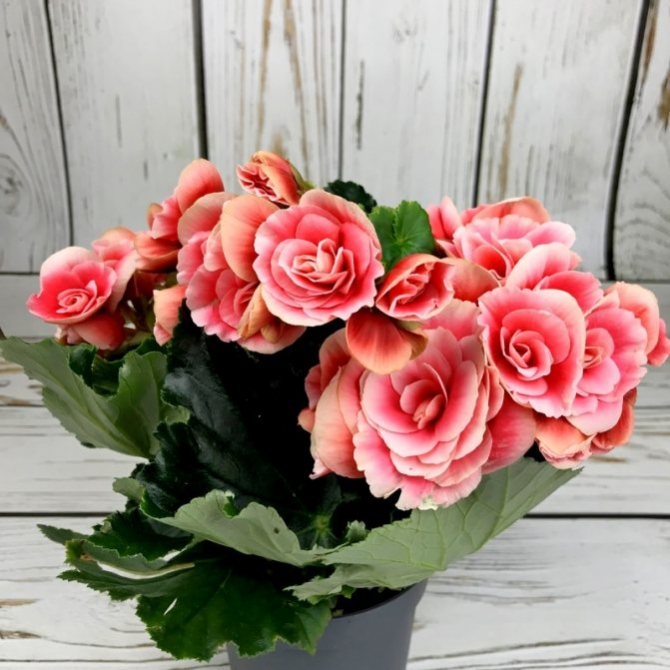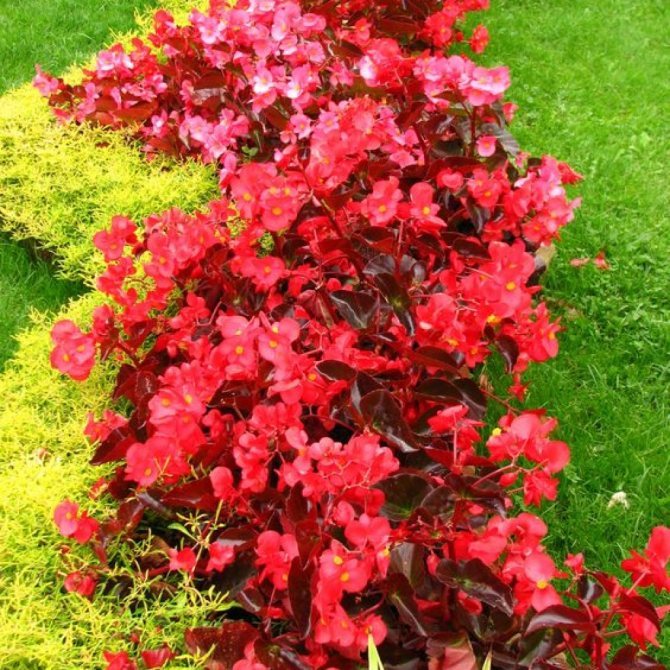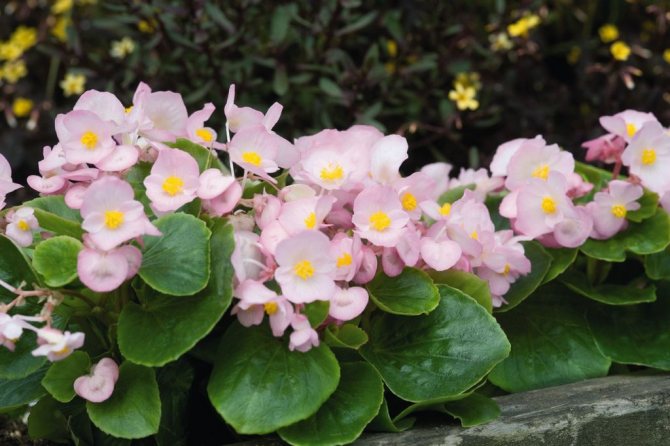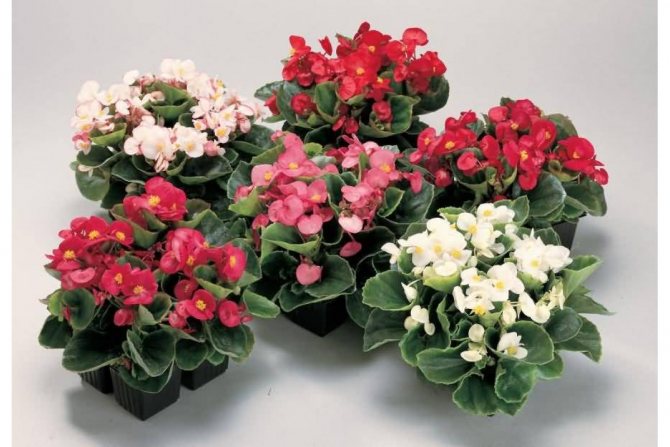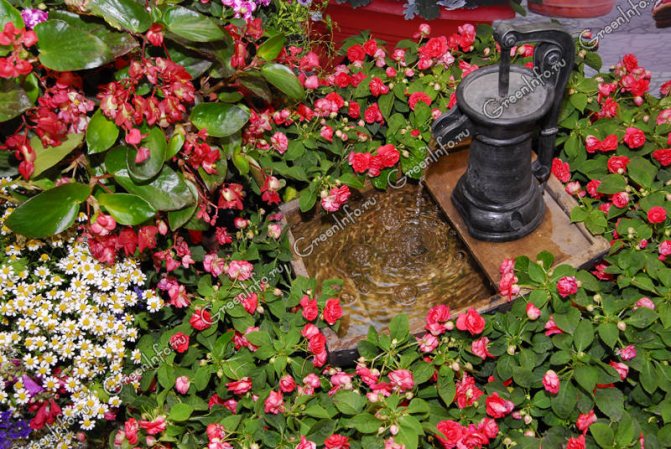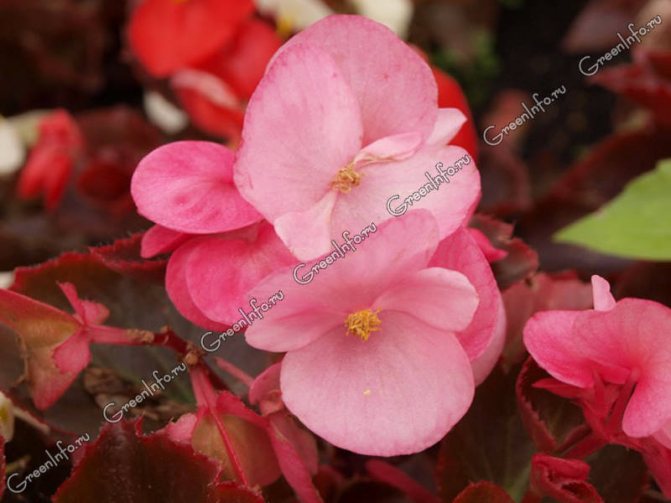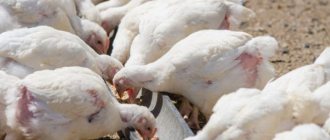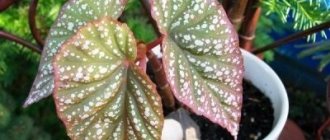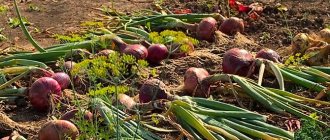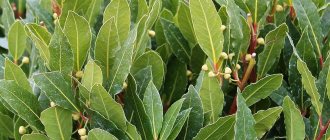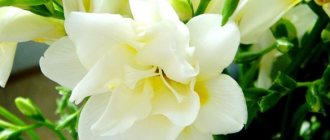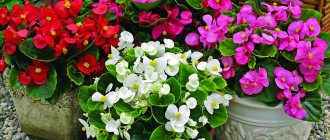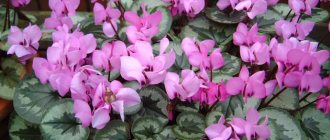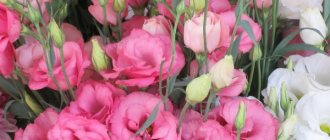Loading ...
Ever-flowering begonia wins the hearts of many amateur flower growers with its unpretentiousness, compactness, small glossy leaves and, of course, abundant flowering, which can last without stopping for a whole year.
One gets the impression that bright pink, red or white buds and flowers bloom incessantly, forever - hence the name of the species.
But what are the features and preferences of the ever-flowering begonia? What conditions does she need? How to propagate it?
Array
What a begonia flower looks like: plant characteristics
Begonia is a genus of plants with over 1600 different species. Depending on the species, it can grow in the form of a grass, shrub or dwarf shrub
Description
The root system is divided into three types: branched, fibrous and tuberous.
For your information! Begonias with a tuberous root system, unlike other species, grow well both indoors and in the garden.
Leaves are asymmetrical, they are whole and dissected, with jagged and wavy edges.

Flowering of a representative of domestic flora
In plants of the genus Begonia, the upper part of the leaf can be monotonous green or other colors with various blotches, strokes, patterns. The lower part has shades of red, brown and dark purple. The stems and leaves of many species are covered with fine villi.
Inflorescences range from small to large. They have a wide variety of colors: white, pink, yellow, orange, red, with edging around the edges of the petals. After pollination, fruits are formed in the form of a triangular box with seeds inside.
Usually blooms in the summer-autumn period, but in indoor conditions flowering continues until December.
Lighting
Ever-flowering begonia is a light-loving plant that prefers bright, but diffused light. The best place for begonias will be the eastern or southwestern window sills.
In the south, it is necessary to shade from the scorching rays of the sun, especially on sultry summer days.
On the northern side and in partial shade, there will not be enough light, in these cases the plant stretches out, loses its compactness, saturation of the color of leaves and flowers.
In order for begonia to bloom all year round, it needs 16 hours of daylight. Therefore, especially in the autumn-winter season, additional illumination is needed, which can be organized using a fluorescent or phytolamp.
Use in landscape design


Very often, the plant can be seen in a flower bed, in a group planting, outdoor lawns and pots, on a balcony or in a room. Bushes with different shades of flowers and leaves are planted with a solid carpet. In a group planting, ever-flowering begonia is placed in front, so it is undersized and bushy. When composing compositions and decorating the territory, it is used as a ground cover crop (in combination with lilies and roses). The plant can be placed in the shade of trees, adding brightness to the garden design.
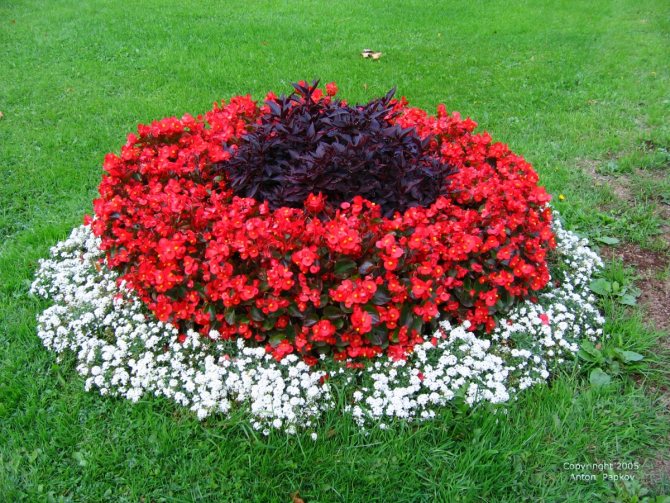

Ever-flowering begonia is unpretentious, easy to grow. Any person is well aware of these qualities and therefore the plant blooms in almost every apartment. The captivating charm of ever-flowering begonia will fill your home with coziness, joy and bright colors.
Temperature
The ever-flowering begonia comes from the tropics, so it loves warmth and does not tolerate cold. It is optimal to keep it at a temperature of 20-25 degrees. In summer, the stem and leaves should be protected from too high temperatures. If the thermometer shows above 30 degrees, it is imperative to take care of the high humidity of the environment.
In winter, it is necessary to protect the root system from hypothermia, so it is better to place the flower away from cold glass.
At the same time, it is not recommended to keep the pot near heating devices.... High temperatures and inadequate lighting will not benefit the plant.
If in winter for ever-flowering begonias it is not possible to create a long daylight hours, it needs a rest period. At this time, the temperature of the content should be lowered to 13-16 degrees, but not lower than 12, since this is a critical minimum for a guest from the tropics.
Watering and humidity
Watering ever-flowering begonia should be done in moderation. She does not tolerate stagnation of moisture in the soil, which is fraught with rotting of the root system, or drying out of an earthen coma, which can lead to drying out of leaves and death of a flower.
The next moistening should be done only after the top layer of the soil dries.... In order not to miscalculate with the amount of water, you can use the bottom watering - in the pan. If the flower has "drunk" all the water, top up, and after 1-2 hours completely drain the rest.
Water for irrigation should be soft, room temperature, settled or boiled. If begonia is kept at rest in winter at a temperature of 13-16 degrees, watering is reduced.
The plant prefers high humidity of the environment - 50-60%. In drier air, the leaves can begin to brown and dry at the ends, and too humid microclimate can provoke the appearance of rot.
You cannot spray begonia - Due to water droplets, dark spots appear on the leaves.
To create optimal conditions, you can humidify the air around the plant with a fine-grained spray bottle, place containers of water near it, or place the pot in a tray filled with wet expanded clay, sphagnum moss or pebbles.
Growing features
- Before planting, begonias are taken outside, gradually increasing the hardening time. This makes it easier for the plant to get used to outdoor conditions.
- It is not worth planting seedlings in open ground until June, when the period of spring frosts will pass. In the same summer, the first inflorescences will appear.
- A flower bed with begonias should be regularly loosened and cleaned of weeds. They can provoke the appearance of infection and simply spoil the look of the flower bed.
Important: it is necessary to loosen it carefully so as not to damage the root system of the flower.
Fertilizer
For a lush year-round flowering of begonias, fertilizing is necessary twice a month. For this purpose, complex mineral fertilizers for flowering plants or special fertilizers for begonias are used.
Top dressing with boron and manganese gives good results. To do this, 1 gram of boric acid and 0.5 gram of potassium permanganate are diluted in 5 liters of water.
Fertilizers are applied to wet soil after wateringa, so as not to burn the root system.
In winter, if additional lighting for flowering is organized, feeding does not stop. Otherwise, they should be reduced to 1 time per month or stopped altogether.
Cutting technology
In the spring, when top dressing is applied, it is important to ensure that fertilizers do not contain many nitrogen compounds. From them the growth of leaves is activated, damage to flowering.
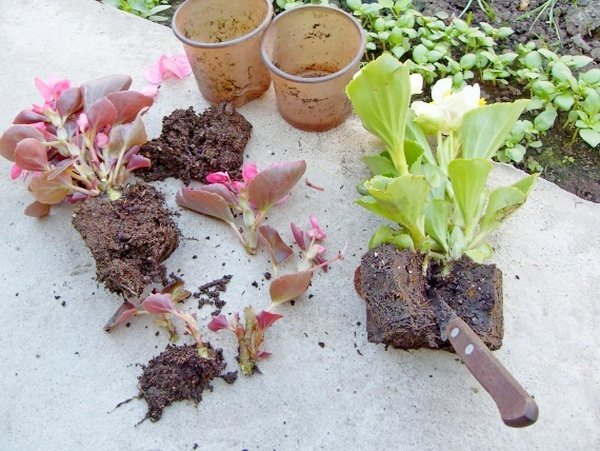

Under optimal conditions, pruning of young plants is not required. As the bush grows, old, damaged leaves that have lost their decorative effect are eliminated. The work is carried out after transshipment or transplantation.
The ground part of the begonia is fragile, so you can't do without losses.
If flowering is not provided in winter, then during the dormant period, dry peduncles and the lower tier of leaves are cut off.
Transfer
Transplantation of ever-flowering begonia is carried out as needed: young specimens - more often, adults - less often. For the latter, the replacement of the topsoil in the pot is mainly used.
After a few years of life, the stems of the plant become bare and lose their decorative effect, therefore they are replaced with new ones grown from cuttings. In view of this, an individual specimen will not need more than 1-2 transplants in a lifetime. The best way to transplant begonias is transshipment... Repotting is usually combined with pruning.
Begonia has a shallow root system, so it needs a wide and shallow pot.
With each transplant, the diameter of the pot should be slightly increased. The pot must have drain holes. A good drainage layer must be laid on the bottom. As it, you can use expanded clay, clay shards, polystyrene, small pebbles. This will help to avoid stagnation of water in the soil in the future.
The soil for planting or transplanting ever-flowering begonias should be slightly acidic, loose, nutritious, and allow air and moisture to pass through well. You can use a ready-made begonia substrate you bought from a store, or you can make your own soil mixture. To do this, take humus, sand and leafy earth in equal proportions.
Seedling
The optimal time for sowing seeds is early January. The seeds are very small, so in order to sow them evenly, it is recommended to mix them with sand. Purchased seeds are often covered with a protective sheath.
Seeds are placed on the surface of damp earth in a box or container, they are not covered with soil.
The container is covered with polyethylene or glass and placed in a place with diffused lighting. "Parnichok" is aired daily, if necessary, the soil is moistened with a spray bottle.
Seedlings should appear in 10-14 days. The "little house" is slightly opened so that the seedlings get used to the room air, and after 2 weeks it is completely removed.
When 2-3 true leaves appear at the seedlings, the first pick is necessary. Seedlings are planted according to the 5x5 cm scheme. A month later, young specimens are planted in individual pots, the size of which should correspond to their root system.
Ampelnaya
The main difference between the ampelous species and other varieties is the tuberous root system. The plant reaches a height of about half a meter. The leaf plates are large, 10-15 cm long. It blooms with bright yellow, orange or red flowers, which can be simple or fringed in type.
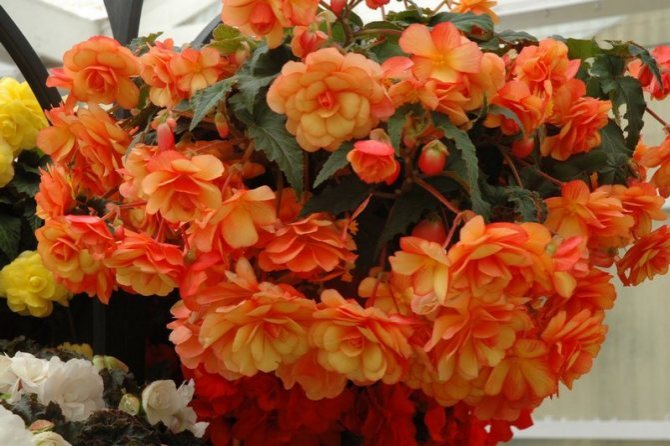

Ampelnaya
Note! The most famous varieties are Ravens, Marmorat and Chardonnay.
Cuttings
In spring and summer, ever-flowering begonia can be propagated by cuttings. To do this, cut the tops of the stems 7-10 cm long with 2-3 pairs of leaves. The lower ones are removed, the sections are dried.
The cuttings are rooted in water or are immediately planted in the ground to a depth of 1-2 cm. Before that, they should be treated with a rooting stimulant, for example, Kornevin or Heteroauxin.
The container is covered with glass or foil, kept in a bright and warm (22-25 degrees) place. "Greenhouse" is periodically ventilated, the soil is moistened if necessary.
When the cuttings have new leaves, the shelter is removed. When the cuttings are well rooted, and this happens within 30-40 days, they are planted in individual pots.
Forum, reviews
Elena writes: “This is my favorite indoor flower. Begonia blooms with me almost all year round, that's certainly "ever-flowering"! The most tedious thing is to remove faded inflorescences. In the spring, I cut my beauty by two-thirds. I feed them with water infused with banana peels — a source of potassium and phosphorus. ”
Igor writes: "It is best to root the cuttings by sticking them into wet moss and covering them with a jar."
Irina writes: “I bought the seeds of the ever-flowering terry begonia.When the seedlings bloomed, the flowers are small, not terry white and yellow, I thought terry would appear later. After reading the article, I realized that it will not appear. "
Diseases and pests
Powdery mildew can attack begonia due to stagnation or lack of moisture in the soil. The combination of low temperature and high humidity can trigger the development of root or leaf rot.
To overcome the disease, first of all, the conditions of detention should be normalized. Then - remove all damaged parts of the flower, and treat the plant itself with a fungicide, for example, Skor or Fitosporin.
Of the pests, the whitefly, scale insect, thrips can pose a danger to begonias.
If found, the insects should be removed mechanicallyby wiping the plant with a cotton pad dipped in alcohol, or by treating the flower with soapy water.
If these methods were unsuccessful, treatment with insecticides is necessary: Aktellik, Nurell-D, Fitoverm.
Care problems
- Begonia shoots begin to stretch, and the leaves turn pale due to insufficient lighting;
- The flowering intensity may decrease due to too high humidity and excessive lighting;
- The buds begin to fall off, and the flower buds dry out due to too dry air;
- Leaves begin to turn yellow as a result of excessive watering or low environmental humidity;
- Begonia can shed its leaves due to stressful situations for it: a sharp change in location, temperature and humidity changes.
Ever-flowering begonia will become an elegant decoration of any room and facade of the house. In response to attention and love, she will give you a lush bloom throughout the year!

